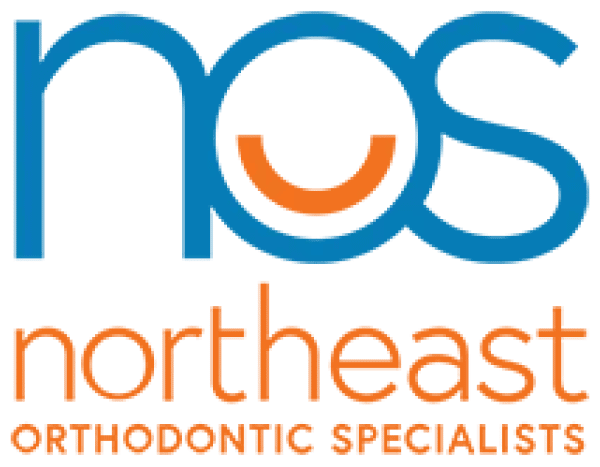How to Know If You or Your Child Needs Braces

This Article Will Address
- 7 common signs that braces may be needed
- What orthodontists look for during an evaluation
- When is the best age to start braces
- Who may not be a candidate for orthodontic treatment
- How overbites are evaluated and when they require care
- Why Cincinnati families trust Dr. Jacob Stadiem and his team
Wondering If It’s Time for Braces? Start with the Right Information.
If you’ve ever wondered whether you or your child might need braces, you’re not alone. Many parents start to question things when they notice their child’s teeth seem crowded or when chewing and speaking start to feel off. Others begin the journey as adults, finally ready to invest in their own smile after years of putting it off.
At Northeast Orthodontic Specialists, our job is to help you move from uncertainty to clarity. Whether you’re looking at early evaluation for your seven-year-old or you’re an adult curious about modern orthodontic options, our team is here to guide you every step of the way. With locations in Blue Ash and Loveland, OH, we make it convenient for Cincinnati-area families to access personalized, advanced orthodontic care in a warm, professional environment.
Dr. Jacob Stadiem, DMD, MS, combines extensive training in both traditional and cutting-edge treatments, including Invisalign and LightForce 3D-printed braces, with a family-focused philosophy that prioritizes your comfort. In this guide, we’ll help you understand the signs, timing, and qualifications for getting braces, so you can make the best choice for yourself or your child with confidence.
7 Signs That You or Your Child May Need Braces
Braces do more than just straighten teeth—they improve bite function, oral health, and confidence. Here are seven common indicators that an orthodontic evaluation may be the right next step:
- Crowded or crooked teeth – Overlapping or twisted teeth may be difficult to clean and often lead to long-term oral health concerns.
- Overbite, underbite, or crossbite – When the upper and lower teeth don’t fit together correctly, it can affect speech, chewing, and jaw health.
- Mouth breathing or persistent thumb-sucking – These habits, especially in young children, can alter jaw development and lead to misalignment.
- Difficulty chewing or biting food – Trouble eating comfortably can be a sign of bite problems that may require correction.
- Early or late loss of baby teeth – Timing matters—losing baby teeth too soon or too late can interfere with how adult teeth grow in.
- Shifting or visibly misaligned jaws – A jaw that appears off-center or clicks when opening and closing could signal an orthodontic concern.
- Speech difficulties or jaw discomfort – Some speech impediments and jaw pain are tied to alignment issues that braces can address.
If you recognize any of these signs, scheduling a complimentary consultation at our Blue Ash or Loveland location is the best next step.
What Qualifies for Needing Braces?
Braces aren’t just for looks. They’re a clinical solution to a range of dental and skeletal concerns. During an orthodontic exam, Dr. Stadiem evaluates several factors to determine whether braces or aligners are necessary:
- Tooth alignment and spacing: crowding, gaps, and rotations
- Bite functionality: overbites, underbites, open bites, and crossbites
- Jaw development: growth patterns and asymmetry
- Overall oral health: enamel wear, gum condition, and how well teeth function during chewing and speaking
Not everyone who comes in will need treatment, but a professional evaluation ensures nothing is missed. We also offer Early Treatment and services for Adolescents & Adults, so we’re prepared to help you make the right choice at any age.
Which Age Is Best for Getting Braces?
The ideal timing for braces depends on growth and development. At Northeast Orthodontic Specialists, we tailor our recommendations to each patient’s age and orthodontic needs.
Children (Around Age 7)
The American Association of Orthodontists (AAO) recommends that children have their first orthodontic screening by age 7. At this age, enough permanent teeth have typically emerged to identify early issues like crowding, bite problems, or jaw irregularities. Early treatment can sometimes guide growth, reduce the need for future extractions, or prevent more serious complications.
Teens
Adolescence is the most common time to start braces because the jaw is still growing, making tooth movement more efficient. Most teens are great candidates for traditional braces or aligners, and many enjoy choosing from modern treatment options like ceramic or clear braces that are more discreet.
Adults
More adults are choosing to improve their smiles than ever before. Whether you missed out on braces earlier in life or your teeth have shifted over time, it’s never too late. We offer discreet options, such as Invisalign and LightForce 3D-printed braces, providing adult patients with advanced solutions that fit seamlessly into their lifestyle.
Who Is Not a Good Candidate for Braces?
While most people can benefit from orthodontic treatment, there are a few situations where braces may need to be delayed or alternative approaches considered:
- Active gum disease or significant tooth decay—these must be treated first
- Poor oral hygiene habits that could lead to complications with brackets or aligners
- Severe periodontal issues or bone loss
- Certain medical conditions (such as uncontrolled diabetes or medications that affect bone health)
- Inconsistent follow-through, especially with removable appliances like Invisalign
Dr. Stadiem will perform a thorough assessment during your first visit and can customize an orthodontic care plan, even if braces aren’t the immediate solution.
How Big Does an Overbite Have to Be to Get Braces?
An overbite occurs when the upper front teeth excessively overlap the lower front teeth. While a small amount of overlap is normal, orthodontists typically become concerned when:
- The overbite measures more than 3 millimeters
- The lower teeth bite into the roof of the mouth
- The bite interferes with chewing, speaking, or causes jaw pain
- There’s visible wear on the front teeth or receding gums
Mild cases may be monitored, while moderate to severe overbites are strong indicators for treatment. We may also recommend additional imaging or growth tracking, especially in younger patients.
Is an Overbite Considered Medically Necessary for Braces?
Yes, in many cases, correcting an overbite is not just cosmetic, it’s critical to long-term health. When left untreated, a severe overbite can lead to:
- Difficulty chewing and biting
- TMJ disorders and jaw discomfort
- Speech impediments
- Increased risk of tooth injury or enamel erosion
If a provider determines that your overbite is affecting function, most insurance plans consider it medically necessary and may cover part of the treatment. Our team will assist with insurance benefit checks and pre-authorization if needed.
Why Choose Northeast Orthodontic Specialists?
Orthodontic care isn’t just about straightening teeth—it’s about choosing a provider who understands your goals and puts your comfort first. Here’s why families across Cincinnati trust us:
- Expert-led care from Dr. Jacob Stadiem, a specialist in traditional and advanced aligner therapy
- Two convenient locations in Blue Ash and Loveland
- Customized treatment for all ages—from early intervention to adult orthodontics
- Advanced technology like Invisalign, ceramic braces, and LightForce™ for precise results
- Welcoming, family-friendly environment and flexible scheduling
- Educational support every step of the way
We pride ourselves on building relationships with our patients, helping you feel supported from consultation to a confident smile.
Brighter Smiles Start with Expert Guidance
Whether you’re seeing signs in your child or thinking it might finally be your turn, now is a great time to take that first step. At Northeast Orthodontic Specialists, we’re proud to offer advanced orthodontic care in a welcoming and supportive setting. With locations in Blue Ash and Loveland, flexible scheduling, and a team that truly listens, we’re here to make your journey to a straighter smile as smooth as possible.
Contact our offices or book online to schedule a braces consultation today. We look forward to helping you or your child smile with confidence.
